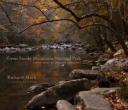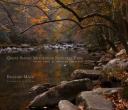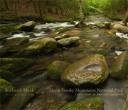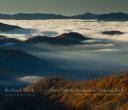This past weekend I had the pleasure of being in Great Smoky Mountains National Park to do two book signing events at Sugarlands and Cades Cove Visitor Centers. It is always fun to be down there and meet folks coming into the park and get reactions to the book first hand. I have some great notes from a few of those who have taken the book home and written me about how much they love the book. I am always humbled by their notes. This past weekend I also ended up giving some advice on where to go to shoot the sunset in the park to three gentlemen who had come for the weekend to shoot some images. I mentioned that on this night they could go up to Clingmans Dome and get two very different shots, one of the full moon rising in the east and then turn to the west and photograph the ridges of mountains in the sunset. I confessed I was going to try and head someplace else to shoot the full moon rising, since I had shot it from Clingmans Dome before – and I showed them the pages in the book. But I confessed if it didn’t work I might see them up there.
Well, as it turns out, the location I thought might work looked a bit to far to the southeast and ridges blocked where the moon was going to come up at 81º in the east. So I eventually headed up to Clingmans Dome and ran into these gents and we ended up shooting together, along with the dozens of others up there that cold, cold evening. I was too late for the moon rise, but got there to shoot the end of the sunset. It is always fun to see how you can have 4-5 folks within feet of each other and we all get different results and see the shots differently. It was also fun to give them some advice on the techniques I use to achieve some of the my images and how late into the darkness I end up shooting, usually being the last to leave an area in total darkness.
All three it turns out have studio’s down south but don’t do nature photography. I got a nice note back from one of them who it turns out is the photographer for the woman’s roller derby team in Atlanta – who knew they still had roller derby? He’s got some nice shots of them. Ironically, none of them bought the book – what’s up with that? – but we all had a great time anyway! In his note he said they all decided to come back often to shoot in the park, so maybe the next time I’m there over Halloween weekend I’ll run into them again.
To see more from this hour of shooting on Clingmans Dome use this link: Clingmans Dome Sunset
Cheers!
Richard





